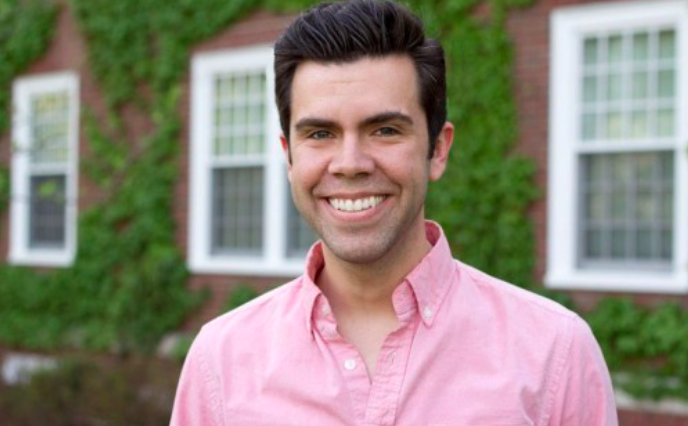Clayton Christensen, the legendary Harvard Business School MBA-turned-faculty member, died in January 2020, but leaves behind him a far-reaching legacy for business leaders.
His theory of Disruptive Innovation has influenced the likes of Intel CEO Andy Grove and helped to shape the Harvard MBA curriculum.
Here’s what we know about the man behind the theory: from his education to his business career, to what Disruptive Innovation really means.
Who was Clayton Christensen?
Clayton Christensen was born in Salt Lake City, Utah, in 1952. A lifelong member of The Church of Jesus Christ of Latter-day Saints, he took two years out of his undergraduate degree at Brigham Young University to do missionary work in South Korea, where he became fluent in Korean.
After graduating with distinctionin Economics in 1975—the same class as future presidential candidate Mitt Romney and former Harvard Business School Dean Kim B. Clark—Christensen received a Rhodes Scholarship to study Applied Econometrics at Queen’s College, Oxford.
While at Oxford University, Christensen put his six-foot-eight-inch frame to use in the university’s basketball team, playing the position of starting center.
Two years later, now with back-to-back basketball championships and an MPhil under his belt, Christensen left Oxford to complete an MBA at Harvard Business School, from which he graduated with high distinction in 1979.
What did Clayton Christensen do for work?
After his MBA, Christensen embarked on an enviable career that took him from consultancy at BCG, to a fellowship at the White House, to founding his own company with a group of MIT professors, CPS Technologies.
He stayed at CPS as president and CEO until the late 1980s, when he re-joined Harvard Business School, this time as a professor. He got his DBA in 1992, and set a school record for achieving full professorship, being awarded tenure within just six years.
In 2000, he founded Innosight LLC, a consulting and training firm he later expanded to include Innosight Ventures, a venture firm focusing on investing in Asia.
In 2007 he founded another investment company, Rose Park Advisors, an investment firm that focused on applying the learnings from Christensen’s Harvard research as an investment strategy.
The research in question was Clayton Christensen’s famous theory of Disruptive Innovation.
Read: How I Got Into The MBA At Harvard Business School—And 4 Ways You Can Too
What is the Disruptive Innovation theory?
In his 1997 book The Innovator’s Dilemma, Christensen outlined his theory of Disruptive Innovation for the first time.
The theory was built to replace the ‘technology mudslide hypothesis’ that Christensen saw prevailing at the time.
The technology mudslide hypothesis posited that all companies were essentially scrambling up a slippery slope. To stay in place and not fall behind competitors, they had to expend constant effort, and if they let up at any point—for example, resting on their laurels after a profitable year—they would experience a downhill slide.
Christensen argued that innovation happened differently.
He put forward the idea that disruptive innovations enter at the bottom of the market. They are not yet profitable enough for established firms to justify pursuing them, usually because it would be too big a distraction from their current business methods, and it is only later that the innovation displaces them.
A good example is in the automobile industry. The first cars were not disruptive innovations, they were luxuries only owned by a very small and wealthy minority and therefore didn’t disrupt existing demand for horse-drawn carriages.
The first real disruptive innovation in the automobile industry came from the Ford Model T. It wasn’t designed to be an improvement on the current product’s performance, it was designed for a whole new set of customers: a lower-cost vehicle accessible to the masses. It disrupted and changed the whole market.
The same is true of computers. The first mainframe computers cost millions of dollars and only a few organizations had one. The advent of personal computers didn’t serve the existing market of big organizations; it opened it up to ordinary consumers.
What is the legacy of Harvard’s Clayton Christensen?
The Economist called Clayton Christensen’s Disruptive Innovation theory the most influential business idea of the early 21st century, and indeed, many titans of business have taken note of it. Christensen himself was flown out to meet Andy Grove, then-CEO of Intel, who used the theory to plan the company’s strategy for launching the Celeron processor.
In 2011, Forbes called Christensen ‘one of the most influential business theorists of the last 50 years’, and he has placed in the top three of the Thinkers 50 three times; twice in the very top spot.
Though Christensen sadly passed away at the age of just 67, his legacy lives on, including in the Harvard Business School MBA.
During his time on the Harvard Business School faculty, Christensen helped to shape the MBA elective curriculum. His course, Building and Sustaining a Successful Enterprise, evaluates theories about strategy, innovation, and management from a general manager’s perspective, aiming to predict the most effective tools.
He also created an online course, Disruptive Strategy, which at the time of his death had been accessed by over 10% of HBS’s cumulative online learners.
“Clayton was one of very few business academics who truly changed practice,” said Harvard professor Rebecca Henderson.
“Disruptive Innovation is now firmly in the managerial lexicon, and I suspect business people will be using it—and thinking about it—long after we are all dust.”
Next Read:
The 18 Most Famous Harvard Business School MBAs




